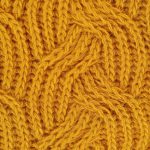You should always hand wash your angora fabric gently in cool water with a mild detergent designed for delicates. Avoid twisting or wringing the garment to prevent stretching and damage. Don’t use bleach, fabric softeners, or harsh chemicals. After washing, lay it flat to dry in a shaded, well-ventilated area. Store angora in a cool, dry place away from sunlight and fold it carefully to keep its softness. Keep going to discover more essential tips for caring for your angora fabric.
Table of Contents
Key Takeaways
- Do hand wash angora fabric gently in cool water with a mild detergent designed for delicate fibers.
- Don’t wring or twist angora garments to avoid stretching and damaging the fibers.
- Do lay angora flat on a towel to dry in a well-ventilated area, avoiding direct sunlight and hanging.
- Don’t use bleach, fabric softeners, or harsh chemicals that can weaken or discolor angora fibers.
- Do store angora flat in a cool, dry place with acid-free tissue paper to maintain softness and prevent compression.
Understanding Angora Fabric and Its Unique Properties
Angora fabric comes from the soft, silky hair of Angora rabbits, known for its exceptional warmth and lightweight feel. When you wear Angora, you’ll notice how it traps heat efficiently while remaining breathable, making it perfect for chilly days.
The fibers are fine and delicate, so you’ll want to handle your Angora garments with extra care to maintain their softness and prevent damage. Angora fabric has a natural elasticity, which helps it retain shape but also means it can stretch if pulled too hard.
Unlike other wools, it doesn’t itch, making it comfortable against your skin. Understanding these unique qualities helps you appreciate why Angora needs special attention, especially when it comes to cleaning and caring for your garments properly.
Preparing Your Angora Garment for Cleaning
Because of its delicate fibers and natural elasticity, you need to prepare your garment carefully before cleaning.
Start by inspecting your angora piece for any damage or weak spots that might worsen during washing. Next, gently remove any surface debris like lint or dust to prevent it from embedding deeper. Finally, check the garment’s care label for specific instructions.
Here’s how to get ready:
- Turn the garment inside out to protect the outer fibers.
- Use a soft brush or lint roller to clear loose particles.
- Spot-treat any stains with cold water before full cleaning.
Proper preparation guarantees your angora fabric stays soft and resilient through the cleaning process, maintaining its luxurious feel and appearance.
Choosing the Right Cleaning Products for Angora
When cleaning your angora fabric, stick to gentle detergents to protect its delicate fibers.
Harsh chemicals can damage the softness and cause shedding, so avoid them completely.
Choosing the right product guarantees your garment stays beautiful and lasts longer.
Gentle Detergents Only
Since angora fibers are delicate, you’ll want to select detergents specifically designed to protect fine fabrics.
Using harsh or regular detergents can damage the softness and structure of angora, so stick to gentle formulas. Look for detergents labeled as mild, wool-safe, or for delicate fabrics to guarantee your angora stays in great condition.
Here are some points to take into account:
- Use liquid detergents rather than powders, as they dissolve better and leave less residue.
- Avoid detergents with added bleach, brighteners, or fabric softeners, which can harm the fibers.
- Choose products with natural ingredients or specially formulated enzymes that clean without stripping oils.
Avoid Harsh Chemicals
You should steer clear of harsh chemicals to keep your angora fabric looking its best. These substances can damage the delicate fibers, causing them to weaken, lose softness, or even discolor. Instead, opt for gentle, natural cleaning products designed for delicate fabrics. Avoid bleach, fabric softeners, and strong stain removers that might strip away angora’s natural oils. Protect your investment by reading product labels carefully and testing any new cleaner on a small, hidden area first.
| Harsh Chemicals | Effects on Angora | How You Feel |
|---|---|---|
| Bleach | Fiber damage, discoloring | Worried about ruining it |
| Fabric Softener | Residue buildup | Frustrated by stiffness |
| Strong Stain Remover | Weakens fibers | Anxious about fabric loss |
| Natural Detergent | Gentle, preserves softness | Confident and relieved |
Hand Washing Techniques for Angora Fabric
To hand wash angora fabric effectively, start by filling a basin with cool water and adding a mild detergent designed for delicate fibers.
Gently submerge the fabric and softly agitate it by hand to remove dirt without stressing the fibers. Avoid wringing or twisting, as this can damage the delicate angora.
Keep these tips in mind:
- Use cool water to prevent shrinking or felting.
- Soak the fabric for no longer than 10 minutes to preserve softness.
- Rinse thoroughly with cool water to remove all detergent residue.
After washing, press the fabric gently between towels to remove excess water.
Lay it flat to dry, reshaping as needed to maintain its original form and softness.
Avoiding Machine Washing and Drying Mistakes
Although machine washing and drying might seem convenient, they often cause irreversible damage to angora fabric. You should never toss your angora items into a washing machine, as the agitation and spinning can stretch, felt, or break the delicate fibers.
Even gentle cycles aren’t safe, since the fabric’s softness and structure can degrade quickly. Similarly, avoid using a dryer. The heat and tumbling can shrink your garment or cause pilling.
If you absolutely must use a machine, opt for a mesh laundry bag and select the shortest, coldest cycle possible—though hand washing remains the best choice. Skipping these precautions often leads to irreversible damage, so take the time to care for your angora properly and preserve its luxurious feel and appearance.
How to Properly Dry Angora Items
Since angora fibers are delicate and prone to damage from heat and agitation, drying them properly is essential to maintain their softness and shape.
After washing, never wring or twist your angora items; instead, gently press out excess water with a clean towel. Lay your garment flat on a dry towel in a well-ventilated area, reshaping it to its original form. Avoid hanging angora pieces, as this can stretch the fibers.
Keep these tips in mind when drying angora:
- Use a flat surface to prevent distortion.
- Avoid direct sunlight or heat sources to protect the fibers.
- Allow ample time for air drying; rushing can lead to damage.
Proper drying keeps your angora soft, durable, and looking great.
Dealing With Stains on Angora Fabric
How should you handle stains on your delicate angora fabric without causing damage?
First, act quickly—blot the stain gently with a clean, dry cloth to absorb excess liquid. Avoid rubbing, which can push the stain deeper or damage fibers.
For fresh stains, use cold water and a mild detergent, dabbing carefully without soaking the fabric. If the stain persists, spot-treat with a specialized wool or angora cleaner, following label instructions closely.
Never use bleach or harsh chemicals, as they can weaken or discolor the fibers. After treating, rinse with cold water and blot dry.
Always test any cleaning solution on a hidden area first. By handling stains promptly and gently, you’ll preserve angora’s softness and appearance without causing harm.
Storing Angora to Maintain Its Softness
To keep your Angora fabric soft, store it in a cool, dry place away from direct sunlight.
Fold it gently to avoid stretching the fibers, and never compress it under heavy items.
These simple steps will help preserve its delicate texture.
Ideal Storage Environment
When storing your angora fabric, you’ll want to create an environment that preserves its delicate softness. Angora is sensitive to moisture, heat, and pests, so controlling these factors is key.
Keep your angora away from direct sunlight to prevent fading and fiber damage. Maintain a cool, dry space to avoid mold and mildew buildup. Finally, protect the fabric from moths and other insects that can cause irreparable harm.
- Store angora in breathable cotton bags or pillowcases, not plastic, to allow air circulation.
- Use cedar blocks or lavender sachets as natural moth repellents without harsh chemicals.
- Guarantee the storage area has stable temperature and humidity levels, ideally around 60°F and 50% humidity.
This setup helps keep your angora soft and fresh for the long term.
Proper Folding Techniques
Creating the right storage environment protects your angora fabric, but how you fold it also makes a big difference in preserving its softness.
When folding, lay the garment flat on a clean surface to avoid stretching the fibers. Fold gently along natural seams to maintain the fabric’s shape and prevent creases. Avoid sharp folds that can break the delicate angora fibers; instead, use loose, broad folds.
If possible, place tissue paper between folds to reduce friction and help the fabric breathe. Keep your folds consistent and avoid piling too many items on top, which can cause unnecessary stress.
Avoiding Fabric Compression
One key step in preserving your angora’s softness is preventing fabric compression during storage.
When angora gets compressed, its delicate fibers flatten, losing the fluffy texture you love. To keep your garment plush, avoid overcrowding your storage space and use gentle techniques to maintain its loft.
Here’s what you should do:
- Store angora flat or loosely folded to avoid crushing fibers.
- Use breathable garment bags to protect without trapping moisture.
- Place acid-free tissue paper between folds to cushion and maintain shape.
Tips for Preventing Pilling and Matting
Although angora fabric is delicate, you can keep it looking smooth and soft by taking simple preventive steps against pilling and matting. Handle your angora gently, avoid excessive friction, and store it properly to maintain its luxurious texture.
| Do | Don’t |
|---|---|
| Wash by hand gently | Use harsh detergents |
| Use a soft brush | Rub fabric aggressively |
| Air dry flat | Wring or twist after washing |
| Store in breathable bag | Hang in direct sunlight |
| Remove pills carefully | Pull or tear pills off |
When to Seek Professional Cleaning Services
If you spot tough stains that just won’t budge, it’s a good idea to call in the pros.
Delicate Angora pieces need extra care that home cleaning mightn’t provide.
When your usual methods fail, trusting a professional can save your fabric from damage.
Identifying Tough Stains
How can you tell when a stain on your angora fabric requires professional care? Tough stains often resist home treatment and could damage the delicate fibers if handled improperly.
You’ll want to spot these early to avoid permanent marks or fabric wear.
Look out for:
- Oil-based stains: Grease or makeup can penetrate deeply and won’t lift easily with water-based cleaning.
- Set-in stains: Old stains that haven’t been treated promptly often require expert methods to remove.
- Large or multiple stains: Extensive damage might overwhelm home cleaning attempts and needs professional attention.
When you identify any of these, it’s best to consult a professional cleaner experienced with angora.
They’ll use specialized techniques that protect your fabric while effectively removing stubborn stains.
Handling Delicate Angora Items
When you own delicate angora items, you need to handle them with extra care to maintain their softness and shape.
If your garment has intricate designs, embellishments, or significant sentimental value, it’s best to take into account professional cleaning. Professionals use specialized techniques and gentle solvents that protect angora’s natural fibers without causing shrinkage or damage.
Also, if you’re unsure about the type of stain or how to treat it safely, leaving the job to experts can prevent irreversible harm.
Remember, frequent washing—even by hand—can weaken angora, so limit cleaning sessions and rely on pros when needed.
Trusting professional services guarantees your angora stays luxuriously soft and lasts longer, preserving its delicate beauty and comfort.
When Home Methods Fail
Although you might feel confident handling angora cleaning at home, some stains and damage require professional attention. When you notice stubborn stains that won’t budge or fabric that feels weakened or misshapen, it’s time to call an expert.
Professionals have the right tools and cleaning solutions to treat delicate angora without causing harm.
Consider seeking professional help if you encounter:
- Persistent oil or grease stains that resist home treatments
- Areas where the fabric looks worn, felted, or distorted
- Large or valuable angora items needing thorough, gentle care
Leaving these issues untreated or attempting aggressive home cleaning can worsen damage. Trusting a reputable cleaner guarantees your angora retains its softness and shape, extending the life of your cherished garment.
Frequently Asked Questions
Can Angora Fabric Be Ironed Safely?
Much like a Victorian gentleman wouldn’t dare wear a top hat at a ball, you shouldn’t iron angora fabric directly. Instead, you should use a low heat setting with a cloth barrier to avoid damaging its delicate fibers.
How Long Does Angora Fabric Typically Last?
You can expect angora fabric to last several years if you handle it gently and avoid harsh cleaning methods. Proper care preserves its softness and durability, so don’t rush washing or expose it to high heat.
Is Angora Fabric Hypoallergenic?
You might expect angora fabric to be hypoallergenic since it’s soft, but it actually can trigger allergies due to lanolin and fine fibers. So, if you’re sensitive, you’ll want to test it carefully before wearing.
Can Angora Be Blended With Synthetic Fibers?
Yes, you can blend angora with synthetic fibers. Doing so often improves durability and reduces cost while keeping softness. Just make sure to check care instructions, as blends may require different washing methods than pure angora.
What Are the Environmental Impacts of Angora Production?
You should know angora production can harm the environment—mohair goats cause overgrazing, leading to soil erosion and habitat loss. Plus, some farms use chemicals and water waste, so choosing responsibly sourced angora helps reduce impact.
- How to Choose Between Woven and Nonwoven Landscape Fabric - July 11, 2025
- What Are the Core Differences Between Woven and Nonwoven Geotextiles? - July 11, 2025
- A Comprehensive Look at the Nonwoven Fabric Industry - July 11, 2025







